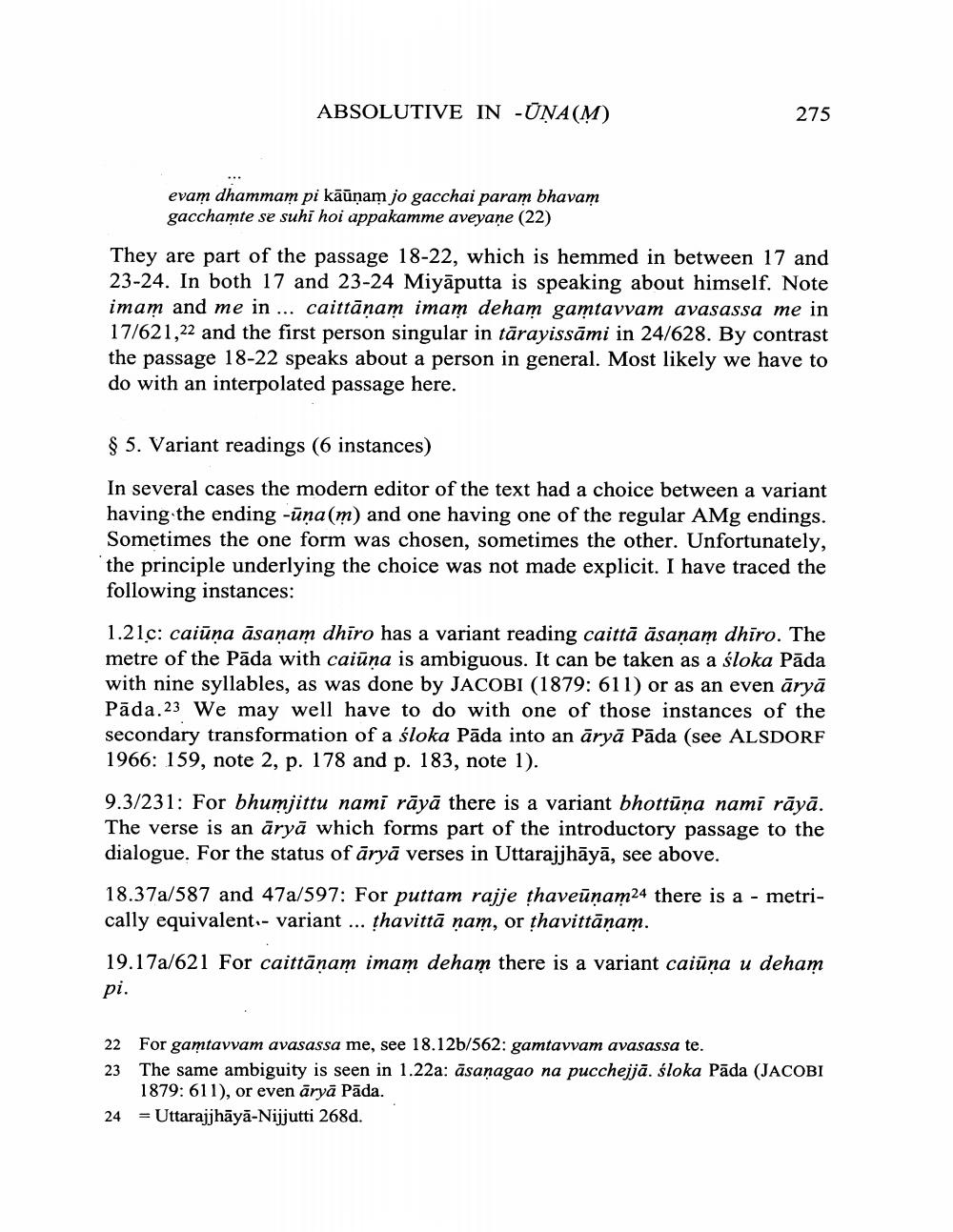________________
ABSOLUTIVE IN -ŪNA(M)
275
evam dhammam pi kāūnam jo gacchai param bhavam gacchamte se suhi hoi appakamme aveyane (22)
They are part of the passage 18-22, which is hemmed in between 17 and 23-24. In both 17 and 23-24 Miyāputta is speaking about himself. Note imam and me in ... caittāṇam imam deham gamtavvam avasassa me in 17/621,22 and the first person singular in tārayissāmi in 24/628. By contrast the passage 18-22 speaks about a person in general. Most likely we have to do with an interpolated passage here.
$ 5. Variant readings (6 instances)
In several cases the modern editor of the text had a choice between a variant having the ending -ūna(m) and one having one of the regular AMg endings. Sometimes the one form was chosen, sometimes the other. Unfortunately, the principle underlying the choice was not made explicit. I have traced the following instances:
1.21c: caiūņa āsaņam dhiro has a variant reading caittā āsanam dhiro. The metre of the Pāda with caiūņa is ambiguous. It can be taken as a śloka Pāda with nine syllables, as was done by JACOBI (1879: 611) or as an even āryā Pāda.23 We may well have to do with one of those instances of the secondary transformation of a śloka Pāda into an āryā Pāda (see ALSDORF 1966: 159, note 2, p. 178 and p. 183, note 1).
9.3/231: For bhumjittu nami rāyā there is a variant bhottuna nami rāyā. The verse is an āryā which forms part of the introductory passage to the dialogue. For the status of āryā verses in Uttarajjhāyā, see above.
18.37a/587 and 47a/597: For puttam rajje țhaveūnam24 there is a - metrically equivalent.- variant ... thavittā ņam, or thavittāṇam.
19.17a/621 For caittānam imam deham there is a variant caiūņa u deham
pi.
22 For gamtavvam avasassa me, see 18.126/562: gamtavvam avasassa te. 23 The same ambiguity is seen in 1.22a: āsaņagao na pucchejjā. śloka Pāda (JACOBI
1879: 611), or even āryā Pāda. 24 = Uttarajjhāyā-Nijjutti 268d.




